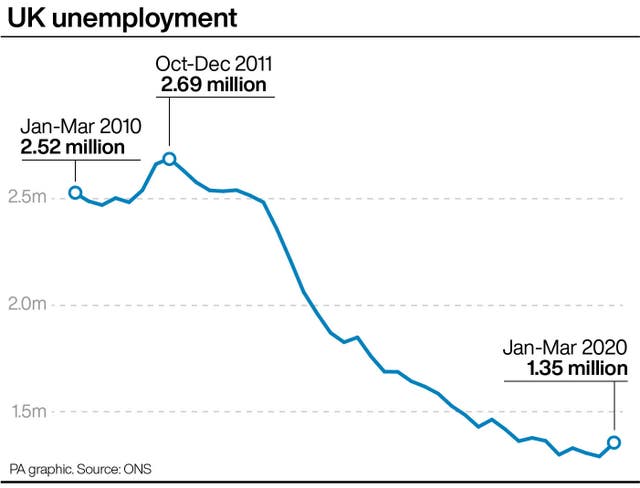
UK unemployment claims soared by more than 69% in April after the coronavirus lockdown gripped the labour market, official figures reveal.
The Office for National Statistics (ONS) said that jobless claims under Universal Credit surged by a record 856,000 to 2.1 million in April, compared with the previous month.
Official statisticians also said early estimates for April 2020 indicate that the number of paid employees fell by 1.6% compared with March, as firms began to feel a greater impact from the lockdown.

Job vacancies also significantly decreased, with the number of empty posts in the three months to April diving by 170,000 to 637,000, compared with the previous quarter.
The ONS also revealed that unemployment increased by 50,000 to 1.35 million in the three months to March, as the impact of the pandemic first started to be felt in the UK.
The rate of unemployment nudged marginally higher, to 3.9%, but remained markedly below economists’ predictions of 4.3%.

Meanwhile, the number of people in work increased by 210,000 to 33.14 million for the quarter to March.
Jonathan Athow, deputy national statistician for economic statistics at the ONS, said: “While only covering the first weeks of restrictions, our figures show Covid-19 is having a major impact on the labour market.
“In March employment held up well, as furloughed workers still count as employed, but hours worked fell sharply in late March, especially in sectors such as hospitality and construction.
“Through April, though, there were signs of falling employment as real-time tax data show the number of employees on companies’ payrolls fell noticeably, and vacancies were sharply down too, with hospitality again falling steepest.”

Tej Parikh, chief economist at the Institute of Directors, said: “Even before lockdown, coronavirus was threatening to take the shine off the UK’s sterling jobs record, and initial estimates for April don’t make for easy reading.
“It’s clear that, without the Government’s furlough scheme, the picture would have rapidly deteriorated even further.”
Fiona Cincotta, financial market analyst at Gain Capital, said: “To put this into context, at the peak of the financial crisis jobless claims hit a high of 136,000.
“The surge in people submitting benefit claims last month come as the virus took its toll on jobs and despite the Government’s job retention scheme.
“This figure is going to get worse before it gets better.”

Enjoy the convenience of having The Sunday Post delivered as a digital ePaper straight to your smartphone, tablet or computer.
Subscribe for only £5.49 a month and enjoy all the benefits of the printed paper as a digital replica.
Subscribe